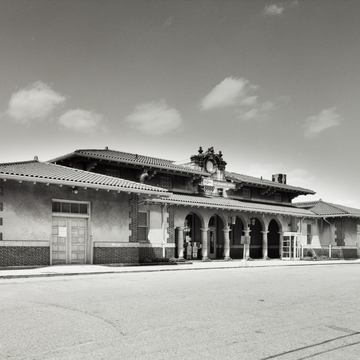This building unexpectedly turns out to be Mission Revival in style, as though displaced from the Santa Fe or Southern Pacific. Perhaps it should be called a building cluster, with waiting room, flanking wings, and arcaded entrance portico, all locked together, but with each functional component also given individual identity by an ingenious two-tiered, hipped roof structure in red tile with extravagantly projecting eaves. The various roof pitches and tiers are pinned together by a stubby ornamental clock dormer over the entrance. Another hipped roof caps a separate platform shelter, supported on paired Doric columns, alternating with arches, all exceptionally well
You are here
Westerly Railroad Station
1912. Railroad Ave.
If SAH Archipedia has been useful to you, please consider supporting it.
SAH Archipedia tells the story of the United States through its buildings, landscapes, and cities. This freely available resource empowers the public with authoritative knowledge that deepens their understanding and appreciation of the built environment. But the Society of Architectural Historians, which created SAH Archipedia with University of Virginia Press, needs your support to maintain the high-caliber research, writing, photography, cartography, editing, design, and programming that make SAH Archipedia a trusted online resource available to all who value the history of place, heritage tourism, and learning.

